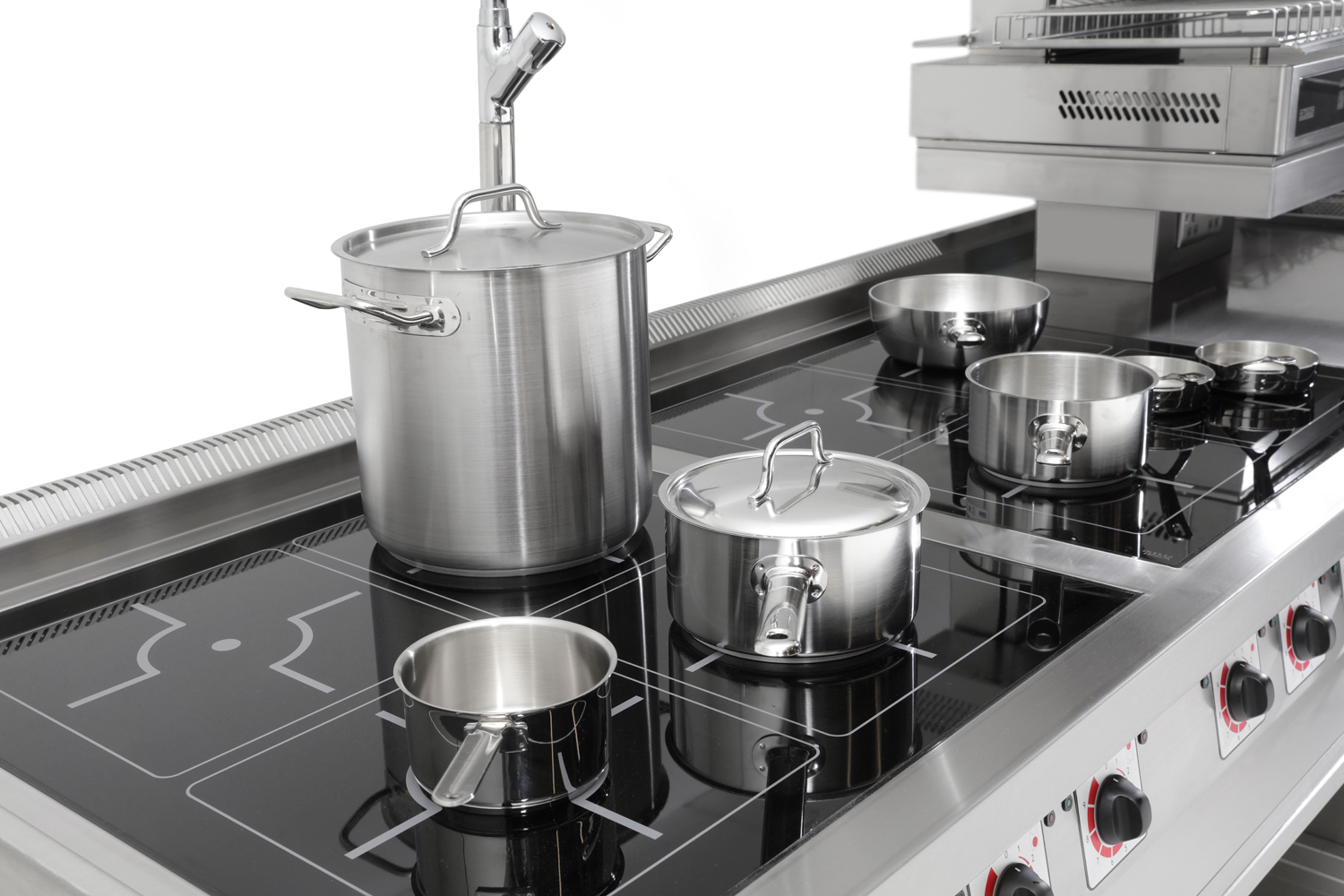How to Choose the Right Cookware for Your Induction Hob
Induction cooking technology is undoubtedly a great investment for any commercial kitchen, providing a range of safety features, improved cooking processes, efficiency and cost benefits - which are just a few of its valuable plus points. However, if you find your pans are not heating up properly and your induction equipment is lacking in power, it’s likely to be down to the material of the pan that you’re using!
Induction powered cooking hobs generate heat through a combination of components, which includes; a generator, a coil, a high-frequency electromagnetic field and magnetic cookware. As the pot or pan is a key component of induction cooking technology, the type of pan used can have a direct effect on the performance of the technology itself.
It’s important that a pan has very good electrical resistance if it’s to function on induction. If the pan is made, for example, from aluminium, copper, silver or gold, a current that’s too high can flow in the base of the pan, meaning no heat will develop. Additionally, many assume that all magnetic pans work on induction; but this is not always the case.
When considering the performance of pans for cooking purposes, the base of the pan does not play a major role. The overall material and thickness of the pan is what affects the distribution and consistency of heat.
If you’re often confused with which pans are compatible and work best with induction hobs, below explains the different types of induction-friendly cookware available.
COMPOSITE BASE
The ‘composite’ describes the base of the pan, which is made from several layers. This usually consists of, a thick middle layer of aluminium or copper, and a thin steel alloy base. The body of composite base pans may be either aluminium, copper or a high-grade steel alloy.
Composite base pans are great for heat distribution; however, aluminium and copper can deteriorate through the use of cleaning agents.
MULTI-LAYER
Multi-layer pans are made entirely from either one layer and/or several layers of material, without changing the actual base. The interior layer is typically made of high-grade steel, the core made of aluminium and the external layer made of high-grade steel.
Multi-layer pans react rapidly to changes of power in the pan, giving excellent temperature control. If the pan walls are the same thickness as the base, the heat-up speed is very fast especially if the pot has a lot of food contents in it. However, if the pot only has a small amount of food inside, a lot of heat is lost to the walls of the pan. If the pan has a thin base, little heat transfer can take place, and there will be uneven heat distribution within the pan. Typically, multi-layer pans have good non-stick qualities and are very easy to keep clean.
CAST IRON
These pans are made from 100% cast iron and have magnetic qualities suitable for cooking with induction.
Cast-iron pans have good heat storage properties. However, they are heavy and take longer to build up heat, due to the material thickness. Typically, cast-iron pans have rough surfaces and therefore, can be difficult to keep clean.
PRESSED BASE
These pans are made from cast aluminium with an induction compatible layer. The aluminium casting is then pressed or melted into this. In most cases, pressed pans are compatible for use with induction; but not all.
When considering the materials of the pan, if an aluminium ring is used on the outer edge of the pan base, this can act like a magnetic short circuit. This means that if the coil is smaller than the pressed pan base the pan can still function. If, however, the coil is larger than the pan, the aluminium ring attempts to heat up, which causes poor performance within the pan.
Pressed pans are typically light weight and provide good heat distribution.
Here at Target Catering Equipment, we recommend Demeyere commercial grade cookware suitable for use with our commercial induction hobs. We’re also on hand to provide you with advice on the best accessories for your hob, in addition to cookware maintenance.
To find out more contact us here.

